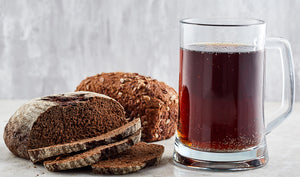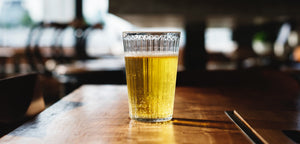Country of Origin
History
Bock originated in the 14th century in Eisbeck, Germany. When first introduced, beer style was unique because of several factors:
- Eisberg was an early & rich hop growing region in Germany.
- Bocks were brewed with the palest malts available (a mix of wheat and barley) to create a more delicate beer.
- Bocks were traditionally brewed in the winter months and cold stored until the spring which made it clearer and less prone to infection.
Before bocks began being brewed, Gruits (spice based beers with no hops) were common in Europe. These beers were often murky, which made the clear and clean bock gain popularity quickly.
The bock also put Eisberg on the map as a brewing centre in Germany, as the majority of German beer was being produced in Munich at the time. Munich brewers were unable to match the quality of the Eisberg Bock and invited Eisberg brewers to Munich to learn the secrets of brewing their bock This resulted in a stronger, darker bock brewed in Munich which became very popular throughout the country. It is this higher alcohol, darker Munich bock that is considered the traditional style by many modern brewers.
Several variations of the Bock exist:
- Maibock (Maybock): Also known as helles ("light") bock, this beer has the strength of a traditional bock, but is lighter in colour and has a more pronounced hop presence. This beer is generally brewed in the month of May.
- Doppelbock (Doublebock) The Munich version of the traditional bock. This version ranges from 7 - 12% ABV and has a stronger taste profile than a traditional bock, with little to no detectable hop flavours or aromas.
- Eisbock (Icebock): A speciality beer from the Kulmbach district of Germany. This bock is made by partially freezing Dopplebock and removing the water. This results in a more concentrated version of a bock, ranging from 9 - 13% ABV, with some as high as 17% ABV.
- Weizenbock (Wheatbock): A relatively uncommon style of bock brewed using wheat instead of barley. This version is top fermented with a wheat beer yeast.
Profile
Bocks have a rich malty flavour profile, and range from dark amber/copper to dark brown in colour. Bitterness from hops should be secondary to the malt forwardness of the beer. A bock can range from 6 - 7.5% ABV and are best when aged.
Serving
There is really no proper serving glass for a bock. It may sometimes be served in a regular pint glass, nonic pint or even a stein. However, because of its higher ABV, it's best suited for a tulip or snifter. Serve at 50–55 °F (10–13 °C).
Food Pairing
Its rich, sweet malty profile makes bock easier to pair with foods than a bitter beer. Bock goes well with medium-hard cheeses like Emmental and Gruyère. Roasted and grilled meats are also good choices for this brew. Don't be afraid to pair this already rich brew with desserts - fruits and shortcakes are perfect along side a bock.



Brewing Tips
- Use a Lager Yeast: Use a bottom fermenting yeast for your bock, and maintain a fermenting temperature around 50 ºF (10 ºC). Your yeast should produce very little diacetyl.
- Perform a Triple Decoction: Yes, you can get away with doing a regular mash for this brew, but if your experience allows, or you want to learn, this brew benefits greatly from a triple decoction. This method will darken the colour and create a more full bodied brew.
- Malt Selection: Keep your grain bill to pale malts. The majority of your grains should be Vienna and Munich malts. Stay away from darker malts unless you need to add a small amount for colour.
Try BrewHQ's Bock Recipe Kit.



